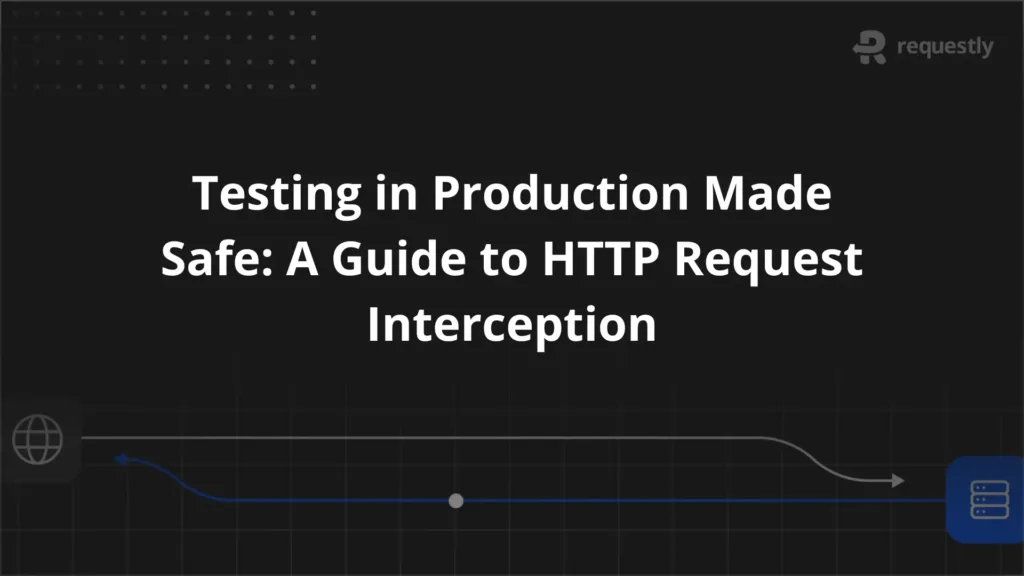FastAPI POST Tutorial: Creating and Validating APIs


POST requests are essential for sending data to a server to create or update resources in web applications. FastAPI simplifies building POST APIs by combining Python’s type hints with Pydantic models, ensuring automatic data validation and serialization. This approach not only reduces boilerplate code but also creates clear, maintainable, and efficient API endpoints.
This article covers the essentials of creating and validating POST APIs in FastAPI, including setup, defining endpoints, handling various POST data types, testing, debugging, and best practices.
What is a POST Request in FastAPI?
A POST request in FastAPI is used to send data from a client to the server, typically to create or update resources. Unlike GET requests that fetch data, POST requests carry information in the body, which FastAPI handles efficiently using Pydantic models for automatic validation and serialization.
When a POST endpoint is defined, it expects data structured according to the specified schema, ensuring that only valid and well-formed data reaches the application logic.
In FastAPI, POST handlers are created using the @app.post() decorator, which marks the function as an endpoint for POST requests. This design makes it simple to build APIs that accept complex request bodies while benefiting from Python’s type hints for clearer, more maintainable code.
Example:
from fastapi import FastAPI
from pydantic import BaseModel
app = FastAPI()
# Define Pydantic model for request body validation
class Item(BaseModel):
name: str
description: str | None = None
price: float
tax: float | None = None
# POST endpoint to create an item
@app.post("/items/")
async def create_item(item: Item):
return item
In this example, the Item model defines the expected data structure. FastAPI automatically parses and validates the incoming JSON data against this model. The endpoint then returns the item data if validation passes, providing a seamless way to handle POST requests.
Setting Up FastAPI for POST Requests
Before creating POST endpoints, it’s essential to set up your FastAPI environment correctly. Begin by installing FastAPI and an ASGI server like Uvicorn to run the application:
pip install fastapi uvicorn
Once installed, create a Python file (e.g., main.py) to define your FastAPI app. Import FastAPI and initialize the app instance:
from fastapi import FastAPI
app = FastAPI()
With this basic setup, the application is ready to define and serve POST endpoints. To start the server and test the API, run the following command in your terminal:
uvicorn main:app --reload
The –reload flag enables automatic server reloads on code changes, ideal for development. This setup ensures your environment is primed to handle incoming POST requests efficiently.
Defining a POST Endpoint with Pydantic Models
FastAPI leverages Pydantic models to simplify defining and validating the data structure for POST request bodies. Pydantic enforces type checks and data validation automatically, ensuring incoming data conforms to the expected schema before it reaches the endpoint logic.
To define a POST endpoint, create a Pydantic model that represents the structure of the data expected from the client. Then, use this model as a parameter in the endpoint function. FastAPI parses the request body, validates it, and passes an instance of the model to the function.
Here’s an example demonstrating this:
from fastapi import FastAPI
from pydantic import BaseModel
app = FastAPI()
# Define Pydantic model for the request body
class Item(BaseModel):
name: str
description: str | None = None
price: float
tax: float | None = None
# Create a POST endpoint with the Pydantic model
@app.post("/items/")
async def create_item(item: Item):
item_data = item.dict()
if item.tax:
total_price = item.price + item.tax
item_data.update({"total_price": total_price})
return item_data
In this example, the Item model describes the fields and their types that the API expects. FastAPI automatically validates the incoming JSON against this model. If the data is valid, the endpoint processes it and returns the augmented data, including a total price if tax is provided.
Handling Different Types of POST Data
FastAPI supports handling various data types in POST requests, making it versatile for real-world applications. The most common format is JSON, where data is sent in the request body and validated through Pydantic models.
In addition to JSON, FastAPI can handle form data using the Form class, which is essential for processing data sent from HTML forms or application/x-www-form-urlencoded requests. For file uploads, FastAPI provides the File and UploadFile classes, enabling efficient handling of multipart/form-data content.
Sometimes APIs require accepting multiple data types simultaneously, such as a file upload alongside form metadata, which FastAPI supports with proper parameter declarations. It’s important to remember that JSON body and form data cannot be sent simultaneously in the same request due to HTTP protocol limitations, so choosing the appropriate data type for your endpoint is key.
Example:
from fastapi import FastAPI, Form, File, UploadFile
app = FastAPI()
@app.post("/submit/")
async def submit_form(
username: str = Form(...),
profile_pic: UploadFile = File(...)
):
return {"username": username, "filename": profile_pic.filename}
This example demonstrates accepting a username via form data and an uploaded file in the same POST request.
Returning Responses from POST APIs
FastAPI automatically converts your endpoint’s return value into an appropriate JSON response. You can return dictionaries, Pydantic models, or custom response classes, and FastAPI handles serialization and validation for you.
It is common to specify a response model with the response_model parameter on the route decorator. This helps validate and filter the response, ensuring only the expected data is sent back to clients. Additionally, appropriate HTTP status codes (like 201 Created for successful POST operations) should be used to reflect the outcome correctly.
Example
from fastapi import FastAPI
from pydantic import BaseModel
app = FastAPI()
class Item(BaseModel):
name: str
price: float
description: str | None = None
@app.post("/items/", response_model=Item, status_code=201)
async def create_item(item: Item):
# Simulate saving the item (e.g., in a DB)
return item
In this example, the API returns the created item with a 201 Created status code, indicating successful creation. Using response models improves API consistency and documentation clarity.
Testing POST APIs in FastAPI
FastAPI makes testing POST APIs simple and efficient, primarily leveraging the built-in TestClient class. This client simulates HTTP requests to your application without needing to run an actual server, enabling fast and isolated endpoint testing.
Testing POST endpoints involves sending requests with JSON payloads or other data types and asserting the expected response status codes and content. Tests are typically written using popular frameworks like pytest and focus on validating correct data handling, error responses, and status codes.
Example test for a POST endpoint:
from fastapi.testclient import TestClient
from main import app # Import your FastAPI app
client = TestClient(app)
def test_create_item():
response = client.post(
"/items/",
json={"name": "Test Item", "price": 10.99, "description": "A test item"}
)
assert response.status_code == 201
data = response.json()
assert data["name"] == "Test Item"
assert data["price"] == 10.99
This test sends a POST request to the /items/ endpoint, checks for a 201 Created response, and validates that the returned data matches the input.
By automating such tests, developers can ensure API stability and catch regressions early in the development cycle.
Debugging POST Requests with Requestly – HTTP Interceptor
Requestly HTTP Interceptor is a tool designed to intercept, inspect, and modify HTTP requests and responses in real time. It helps developers debug POST requests by allowing them to monitor payloads, headers, and server responses without changing backend code.
Key Features for Debugging POST Requests:
- Request Inspection: View detailed information about POST request bodies, headers, and query parameters to identify issues quickly.
- Modify Requests and Responses: Change request data or mock server responses on the fly to test various scenarios and edge cases.
- Support for Multiple Platforms: Available as a browser extension and desktop app, covering different development environments.
- Rule Sharing: Share interception rules within teams for consistent debugging and testing setups.
Benefits for FastAPI Development:
- Speeds up the debugging process by providing real-time insight without modifying server logic.
- Enables testing of error handling and edge cases that are hard to reproduce with manual testing.
- Facilitates front-end and back-end collaboration by simulating backend responses during development.
Conclusion
POST requests are vital for creating and updating resources in APIs. FastAPI makes handling POST requests straightforward by using Pydantic models for automatic data validation and serialization. Setting up FastAPI for POST involves defining clear data schemas, managing various data types like JSON and form data, and returning consistent, meaningful responses.
Thorough testing with FastAPI’s TestClient and efficient debugging using tools like Requestly enhance API reliability and development speed. Following best practices ensures that POST APIs built with FastAPI stay scalable, maintainable, and robust in production environments.

Contents
Subscribe for latest updates
Share this article
Related posts






















